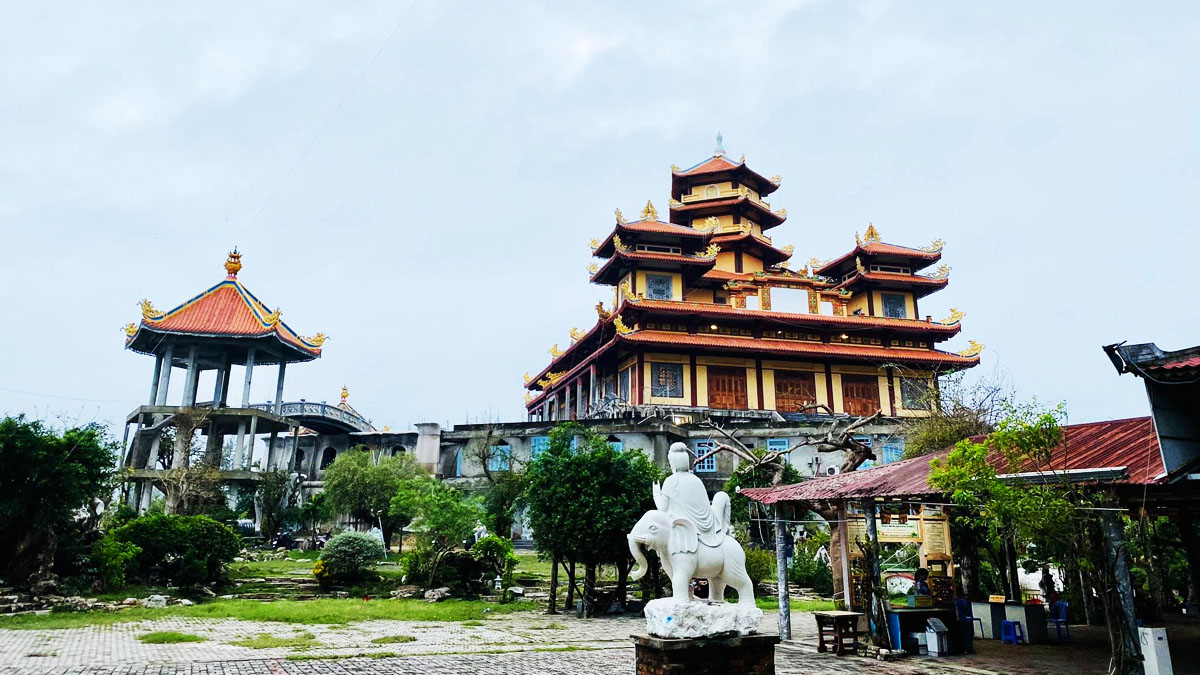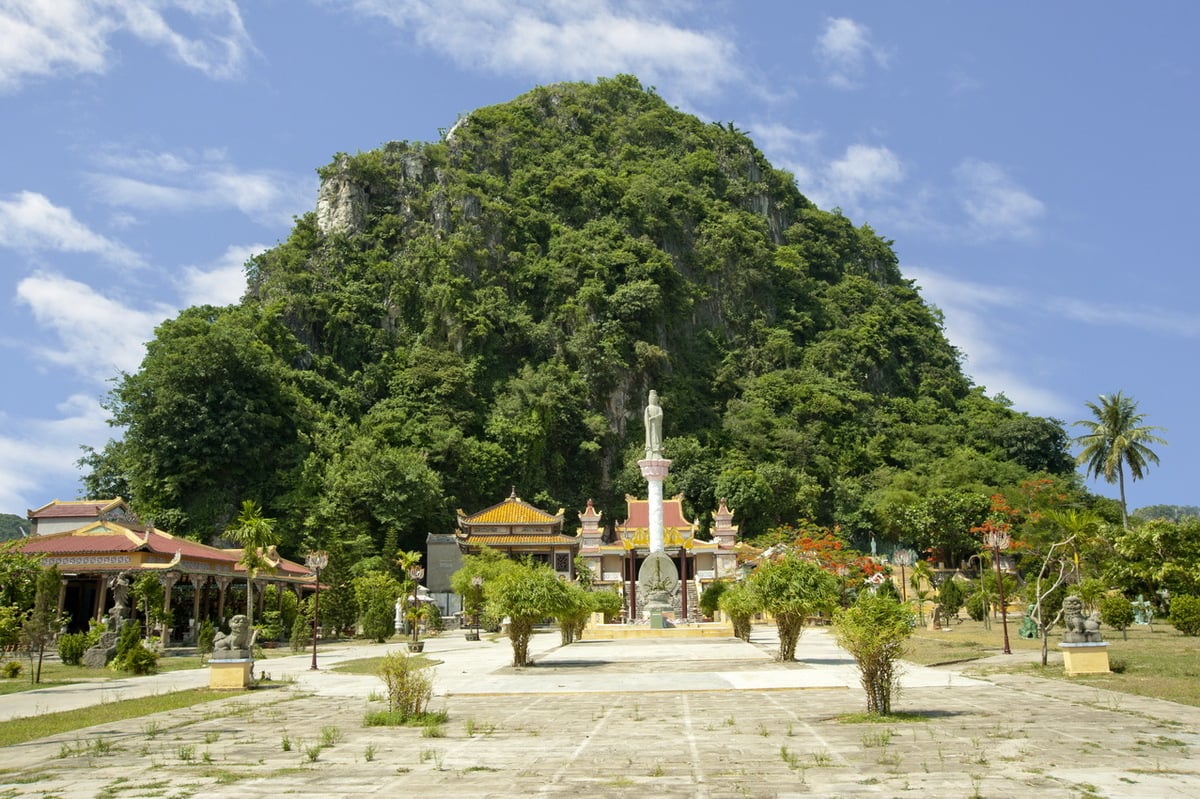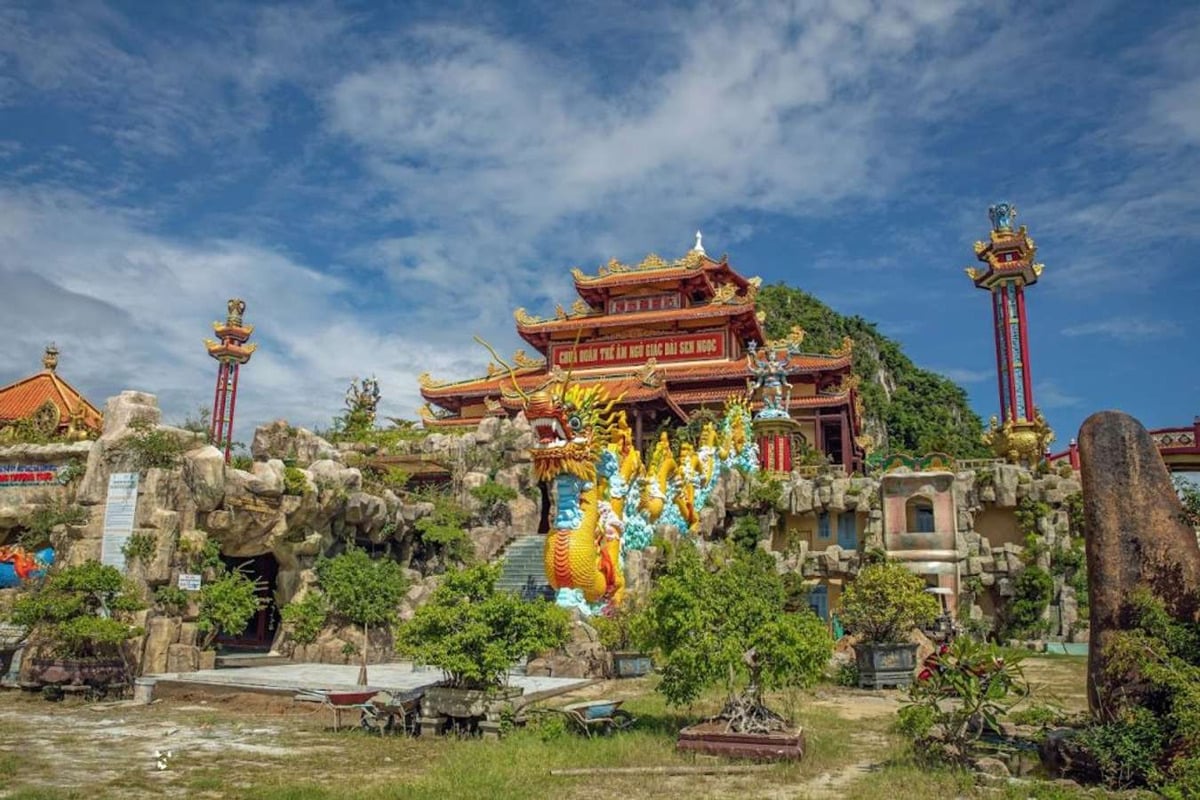Quan Am Pagoda
Quan Am Pagoda – Overview
Chùa Quan Âm, also known as Chùa Quán Thế Âm, is a famous Buddhist temple located in Ngu Hanh Son District, Da Nang, Vietnam. Nestled near the Marble Mountains, it is renowned for its spiritual significance and the annual Quan The Am Festival.

History and Significance
The pagoda was established in the 20th century and dedicated to Bodhisattva Avalokitesvara (Quán Thế Âm in Vietnamese), the embodiment of compassion. Over time, it has become a spiritual refuge for both locals and visitors, drawing thousands each year during major Buddhist events.
The temple is closely associated with the Quan The Am Festival, held annually around the 19th day of the second lunar month, one of the biggest Buddhist festivals in central Vietnam.

Architecture and Highlights
The architecture of Quan Am Pagoda blends traditional Vietnamese elements with natural cave formations from the nearby Marble Mountains. Highlights include:
-
A grand statue of Quan The Am Bodhisattva standing in a peaceful posture.
-
Beautifully adorned main prayer halls and altars filled with incense and offerings.
-
Marble sculptures and decorative stone pillars representing Buddhist teachings.
-
Natural caves that have been transformed into meditation spaces and shrines.
-
Lush greenery and gardens that enhance the tranquil ambiance.
Location and Access
Quan Am Pagoda is situated at the foot of Kim Son Mountain, part of the Marble Mountains (Ngu Hanh Son), roughly 8 km southeast of Da Nang city center. It’s easily accessible by car, motorbike, or on foot for those visiting the mountain complex.

Cultural and Spiritual Importance
This pagoda is a sacred place of pilgrimage and a cultural landmark in central Vietnam. The annual Quan The Am Festival features traditional rituals, performances, and community activities. It reflects Vietnam’s deep-rooted Buddhist heritage and the values of compassion, peace, and mindfulness.

